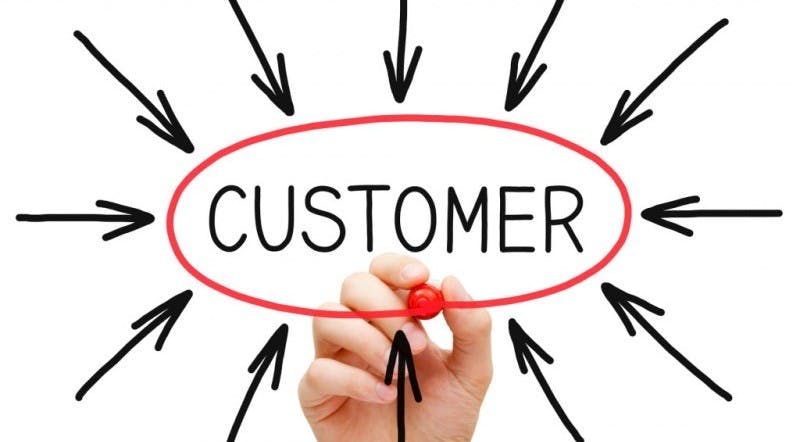The explosive changes in retail today are due in part to pervasive mobile technology, which is empowering consumers. With mobile shopping and abundant product information at their fingertips, consumers now expect and reward a personalized, omnichannel shopping experience.
Omnichannel means consumers can research and buy products anywhere – from traditional brick and mortar stores, to online channels using digital and social media on computers, tablets and smartphones. Personalization helps shoppers feel special and understood, and involves customizing your marketing to reflect consumers’ personal preferences.
To compete effectively, consumer goods and retail companies are using omnichannel personalization to engage consumers, and offer them the convenience to browse and buy products however and wherever they choose.
Why omnichannel personalization matters
As Computerworld declared, “Success means merging online and in-store.”1Gaudin, Sharon. For retailers, e-commerce alone won’t make the sale. Computerworld. January 19, 2016. To succeed in the B2C market, companies of all sizes strive to deliver a seamless customer experience throughout the entire buyer journey, and across all channels.
Forrester Research found one-third of retailers surveyed plan to grow their smartphone investments by more than 20% in 2016. Their in-store associates are more likely to use tablets to provide greater service to customers, show additional products not available in stores, send e-receipts, and check inventory in warehouses and in-store.2Berthiaum, Dan. Study: Mobile Commerce Paradigm Shifts. Chain Store Age. January 7, 2016.
Beyond the store, e-commerce accounted for 7.3% of global retail sales in 2015, and will grow to 12.4% by 2019, eMarketer says.3Lindner, Matt. Global e-commerce sales set to grow 25% in 2015. Internet Retailer. July 29, 2015. Social buying is also accelerating. While only 10% of all U.S. shoppers told PwC they shopped directly from social media in 2015, that figure is more than double the 4% that said the same thing in 2014.4Murphy, Ian P. From phone to store, the entire customer experience is the key. Retail Dive. April 6, 2016.
What’s fueling this growth?
Perhaps when consumers feel understood, they’re more willing to buy. Accenture found 73% of consumers prefer to buy from brands that personalize their shopping experiences. eMarketer found data-driven marketing led to revenue increases for 57% of marketers and 56% of marketers say personalized content drives higher engagement. Even Deloitte named personalization among its 4 Ps of Retail, as consumers favor customized communications.5Deloitte. Retail Trends 2016: Redefining Convenience.

Omnichannel personalization trends
The following omnichannel personalization trends impact B2C companies:
- Data-driven marketing
As a Forbes article states, “It’s critical in the era of the social web … for marketers to ensure they’re personalizing experiences in the ‘offline’ or physical world, as well as its digital counterpart, and always grounding it in data.”6Chandra, Aseem. Why Personalization Is Key To The Future Of Marketing. Forbes. May 12, 2014.
Ideally, companies unify their consumer data, including in-store transactions, online browsing and social media engagement. Combining disparate sources of data allows companies to truly know consumers – at the individual level instead of a generic buyer persona. Applying data insights helps companies capitalize on current retail trends, including omnichannel, mobile and social selling.7Newman, Daniel. The Top 10 Marketing Trends That Will Define 2016. Forbes. November 3, 2015. These insights help B2C companies optimize their marketing personalization across all their online and offline channels.8Donde, Nitin. Unlocking Retail’s Big Data Opportunity. Datanami.com. April 8, 2016. - Physical stores embrace digital
Since some shoppers prefer mobile to malls, traditional retailers are embracing digital channels to give consumers more choices. For instance, cosmetics giant Sephora’s in-store experience includes a digital Beauty Board where shoppers can browse user-generated content and find the products featured in in-store photos. Shoppers can also personalize the images to show products for their own skin tone.9Milnes, Hilary. Inside Sephora’s innovation lab. Digiday.com. January 6, 2016To simplify the customer experience, Kroger’s ClickList online grocery ordering service lets shoppers order products online and pick them up in-store. Similarly, Starbucks’ new mobile app lets consumers pay by smartphone and pick up their customized drinks in-store without waiting in line. - E-commerce giants get physical
In recent years, e-commerce retailers like Amazon10Alter, Alexandra and Nick Wingfield. A Trip Through Amazon’s First Physical Store. The New York Times. March 10, 2016., Birchbox11Birchbox.com. Birchbox Soho Is Here! Meet Our First Brick-and-Mortar Store. April 2014. and Warby Parker12Macmillan, Douglas. Warby Parker Adds Storefronts to Its Sales Strategy. The Wall Street Journal. November 17, 2014. have opened physical stores to offer convenient omnichannel options and personalized service. Opening physical stores allows e-commerce companies to provide a richer customer experience, including face-to-face, personalized service, to strengthen relationships with consumers. Offering an in-store experience allows customers to touch the merchandise, and try on clothing, cosmetics or glasses – items that shoppers may return more often due to poor fit when purchased online only.The stores also encourage showrooming, which allows shoppers to visit a brick-and-mortar store to examine a product – then buy it online.
Bringing it all together
To deliver superior service and convenience, CPG and retail companies are offering omnichannel options. By analyzing consumer data from their online and offline channels, B2C companies can make their marketing resonate by customizing it to individual preferences. Embracing omnichannel personalization helps these companies gain a competitive edge.

